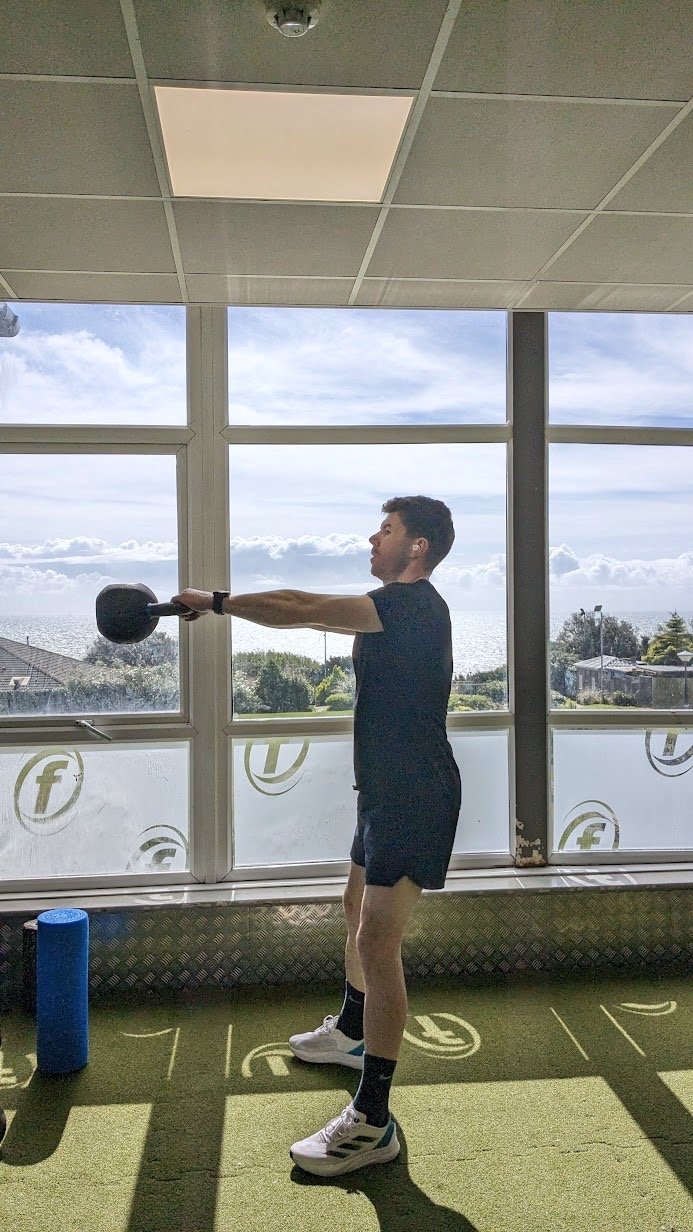Balancing Endurance and Strength Training for Optimal Performance
Recent research proves that incorporating both endurance and strength training into athletic routines isn't just a trend; it's a strategic move with numerous benefits, especially for those competing in endurance-focused events like triathlons, this fusion can be a game-changer.
Endurance, Strength Training
In the realm of fitness, the dichotomy between endurance and strength training has long been a subject of debate. Each approach offers unique benefits and serves distinct purposes in achieving overall fitness goals. As someone training for our very first triathlon competition, where endurance is paramount, we've recently shifted our focus slightly towards incorporating more strength training into our regimen.
The most common movement patterns performed during military tasks and training—deadlifts, pulling, squats, pushes, carries, and lunges—have become the cornerstone of our workouts. These foundational movements not only enhance strength but also power, speed, coordination, and importantly, they promote core stabilization, reducing the risk of injury. Let's delve into the rationale behind this shift and how it has influenced our training routine.
Endurance and Strength Training
Endurance training has been the cornerstone of our fitness journey, and for good reason. Traditionally centered around activities like running, cycling, and swimming, endurance training is tailored to enhance the body's capacity to sustain prolonged physical activity. It's a vital component for athletes preparing for endurance-based sports like triathlons, where stamina and resilience are key. This aspect of my training remains crucial, and we continue to dedicate significant time to activities that challenge my cardiovascular system and push my limits.
There's a certain allure to endurance training — the rhythmic pounding of feet on pavement, the meditative rhythm of strokes in the water, or the wind rushing past during a long bike ride. It's a connection with nature and a test of mental fortitude that I find deeply rewarding. However, as I've progressed in my fitness journey and established a solid foundation in endurance, I've come to appreciate the importance of incorporating strength training into my routine. Strength training, characterized by resistance exercises like weightlifting, serves as a complement to endurance training, offering a myriad of benefits that extend beyond sheer muscle mass.
A Holistic Approach to Fitness
Embracing strength training doesn't mean abandoning endurance; rather, it's about striking a balance between the two. By incorporating full-body workouts that focus on the 6 main fundamental movement patterns such as squatting, hinging, etc, I aim to enhance not only my strength but also my overall functionality and resilience.
The decision to prioritize strength training stemmed from a desire to diversify my training regimen and address certain areas of weakness. While endurance training builds cardiovascular endurance, strength training targets muscular strength and power, offering a more well-rounded approach to fitness. Moreover, scientific research has underscored the role of strength training in promoting longevity and improving overall health.
The core six foundational movement patterns, are the roadmap to a resilient body, enhancing strength, agility, and longevity.
~wellness vault
Injury Prevention and Performance Enhancement
One of the key advantages of strength training lies in its ability to prevent injuries, such as 10-month recovery following short distance runs, and enhance performance in endurance activities of all types. A stronger, more resilient body is better equipped to handle the demands of endurance sports, reducing the risk of overuse injuries and improving overall efficiency. Additionally, building lean muscle mass through strength training can enhance metabolic function, aiding in weight management and optimizing performance.
Incorporating strength training into my regimen hasn't been without its challenges. Balancing the demands of endurance and strength training requires careful planning and periodization to prevent overtraining and ensure adequate recovery. By listening to my body, adjusting my training intensity, and prioritizing rest and recovery, I strive to strike a harmonious balance between the two disciplines.
In conclusion, our fitness journey unfolds as a dynamic process marked by constant evolution and adjustment. While endurance training holds its traditional significance, we acknowledge the growing importance of incorporating strength training to fortify our performance and resilience. Through a deliberate and balanced approach to both disciplines, we strive to realize our fitness objectives and maximize our athletic capabilities.
We hope you enjoyed reading this article on endurance and strength training and found it inspiring.
Source
About the Author
Razvan Chiorean is a published author of Wellness Vault and a passionate advocate of sport performance and holistic fitness, bringing forth a wealth of knowledge and insight accumulated over more than a decade of dedicated involvement in the fitness space. He’s also an enthusiastic triathlete. Whether it’s swimming, cycling, or running, Razvan champions the idea that endurance and consistent movement is essential for overall health and a resilient mind-body connection. This philosophy not only supports physical and mental well-being but also empowers individuals to flourish in a world increasingly shaped by digital convenience.
****
Recent Posts
Inspiration & Education
Be Active, Be Healthy & Belong
Connect with us on Instagram!
Lace Up, Let's Go!
Time to Get You Started! Dive In and Feel Alive!
When Cardio Meets Strength!



































Discover how running sharpens your mind, boosts mood, and fosters personal growth, discipline, and real-life connections.